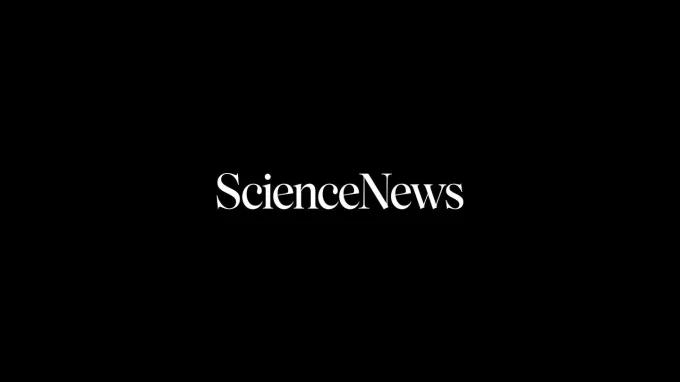Science News Magazine: Current Issue
Vol. 175 No. #10
Trustworthy journalism comes at a price.
Scientists and journalists share a core belief in questioning, observing and verifying to reach the truth. Science News reports on crucial research and discovery across science disciplines. We need your financial support to make it happen – every contribution makes a difference.
More Stories from the May 9, 2009 issue
-
 Earth
EarthArctic ice more vulnerable than ever
Ocean’s ice cap is smaller than long-term average and thinnest yet as melt season begins.
By Sid Perkins -
 Earth
EarthNickel down, oxygen up
Researchers point to the early ocean's concentration of nickel as the possible start for events that allowed Earth's atmosphere to accumulate oxygen.
-
 Health & Medicine
Health & MedicineAcid reflux link to asthma now in doubt
Heartburn drugs called proton pump inhibitors, commonly prescribed for asthma patients, don’t prevent breathing attacks.
By Nathan Seppa -
 Health & Medicine
Health & MedicineThe other, friendly fat
Brown fat is active in adult humans and could help keep people lean.
-
 Materials Science
Materials ScienceDouble-laser approach makes one thin line
Erasing and stenciling could refine tiny printing for sculpting nano-sized devices.
-
 Animals
AnimalsOh, he’s such a lab bird
Bold flycatchers may be more likely than shy birds to get trapped for lab studies.
By Susan Milius -
 Life
LifeEarly land arthropods sported shells
Ancient ocean-dwelling arthropods may have worn shells to enable their transition to land.
By Sid Perkins -
 Health & Medicine
Health & MedicineHypoglycemia linked to dementia
Episodes of low blood sugar that require medical attention seem to increase a person’s risk of developing dementia in old age, a study in people with type 2 diabetes shows.
By Nathan Seppa -
 Space
SpaceMassive solar flares captured in 3-D
Distance between orbiting STEREO craft allows better imaging of coronal mass ejections.
By Sid Perkins -
 Life
LifeLizards sunbathe for another reason
Panther chameleons may regulate their vitamin D levels by lounging in the sun.
-
 Tech
TechCloaked eye still sees
Researchers have proposed a model that would allow sensors to send and receive information virtually undetected.
-
 Health & Medicine
Health & MedicineSeemingly misplaced DNA acts as lenses
Nocturnal animals orient DNA in retinal cells to focus light.
-
 Physics
PhysicsNanoclusters seem to skirt physics law
In simulations, tiny loophole allows colliding nanoclusters to increase speed after impact.
-
 Plants
PlantsLandscaper’s darling hybridizes into an environmental nuisance
Variation underlies the Callery pear tree’s transformation .
By Susan Milius -

Science Future for May 9, 2009
May 10 Winners of the “Best Visual Illusion of the Year Contest” announced in Naples, Fla. View entries at illusioncontest.neuralcorrelate.com May 10–15 Intel International Science and Engineering Fair for students in grades 9–12 in Reno, Nev. Visit www.societyforscience.org June 10–14 The World Science Festival in New York City. See the lineup at www.worldsciencefestival.com
By Science News -

The Fifth Postulate: How Unraveling a Two-Thousand-Year-Old Mystery Unraveled the Universe by Jason Socrates Bardi
The story of the discovery of non-Euclidean geometry. Wiley, 2009, 253 p., $27.95. THE FIFTH POSTULATE: HOW UNRAVELING A TWO-THOUSAND-YEAR-OLD MYSTERY UNRAVELED THE UNIVERSE BY JASON SOCRATES BARDI
By Science News -

-

Earthquakes, Volcanoes, and Tsunamis: Projects and Principles for Beginning Geologists by Matthys Levy and Mario Salvadori
Kid-friendly activities reveal the science behind natural disasters. Chicago Review, 2009, 136 p., $14.95 EARTHQUAKES, VOLCANOES, AND TSUNAMIS: PROJECTS AND PRINCIPLES FOR BEGINNING GEOLOGISTS BY MATTHYS LEVY AND MARIO SALVADORI
By Science News -

At Nobel Conference, scientists and public converse
Physics professor Charles Niederriter of Gustavus Adolphus College directs the Nobel Conference, an annual forum where scientists and the public discuss a contemporary scientific topic. Held every year at Gustavus Adolphus, in Saint Peter, Minn., this year’s Nobel Conference, October 6–7, will examine the current state of water resources. Staff writer Laura Sanders recently talked […]
-
 Animals
AnimalsSwarm Savvy
How bees, ants and other animals avoid dumb collective decisions
By Susan Milius -

The Genetic Dimension of Height and Health
It may be no tall tale: A few inches taller or shorter could signal a risk for some diseases.
-
 Ecosystems
EcosystemsLiving Physics
From green leaves to bird brains, biological systems may exploit quantum phenomena.
By Susan Gaidos -

Letters
Don’t dismiss Lamarck Your January 31 special birthday edition on Darwin (SN: 1/31/09, p. 17) was excellent, but I believe that science has allowed Jean-Baptiste Lamarck’s contributions to be overshadowed by Darwin’s. The change that can occur to an organism’s genetic makeup during its own lifetime harks away from Darwin’s slow evolutionary process by chance […]
By Science News -

Science Past from the issue of May 9, 1959
Forecast 25% increase in air’s carbon dioxide — A 25% increase in the amount of carbon dioxide in the earth’s atmosphere during the 150-year period ending in 2000 A.D. has been forecast. Dr. Bert Bolin of the University of Stockholm in Sweden told the National Academy of Sciences meeting in Washington that the burning of […]
By Science News -

Nanoscale: Visualizing an Invisible World by Kenneth S. Deffeyes and Stephen E. Deffeyes
Illustrations reveal the nanoscale world in rich detail. MIT, 2009, 133 p., $21.95. NANOSCALE: VISUALIZING AN INVISIBLE WORLD BY KENNETH S. DEFFEYES AND STEPHEN E. DEFFEYES
By Science News
